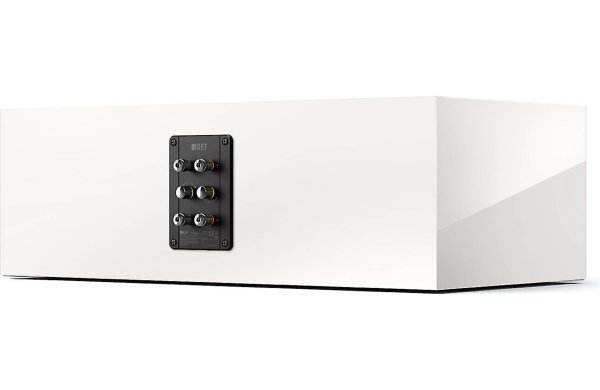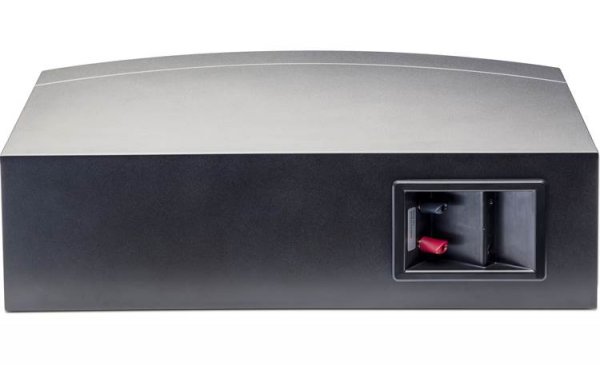In this review, we will be comparing R6 Meta and ElectroMotion ESL C, two Passive Center Channel speakers from KEF and MartinLogan.
Let's have a brief look at the main features
of KEF R6 Meta and MartinLogan ESL C first before getting into our more
detailed comparison.
KEF R6 Meta Key Specs
- 3-way Design
- 12th Generation Uni-Q Driver
- 1" Hard-Dome Tweeter
- 5" Midrange
- 2 x 6.5" Hybrid Aluminum Woofer
- 65-28k Hz Frequency Response
- 88 dB Sensitivity
- Impedance: 4ohms
- Power Range:15-250watts
- Weight:17.82kg
- Dimensions (H x W x D): 202.0" x 24-5/8" x 13-5/16"( 202.0 x 626.0 x 339.0mm )
MartinLogan ESL C Key Specs
- 3-way Design
- 1 x 1-7/16" Folded Motion Tweeter
- 2 x 5.25" high-rigidity aluminum woofers Woofer
- 66-23k Hz Frequency Response
- 89 dB Sensitivity
- Impedance: 4ohms
- Power Range:20-300watts
- Weight:14.55kg
- Dimensions (H x W x D): 194.0" x 22-7/8" x 16-1/8"( 194.0 x 582.0 x 410.0mm )
What size room are the KEF R6 Meta and MartinLogan ESL C speakers good for?
The size of the room in which you are planning to use these loudspeakers is an important decision
factor. Here we have compared their suitability to various sizes of environments considering their size
and max power parameters:
| Listening Environment* |
KEF R6 Meta |
MartinLogan ESL C |
| Near-field |
Poor |
Poor |
| Small Room |
Poor |
Poor |
| Mid-size Room |
Good |
Good |
| Large Room |
Good |
Good |
| Very Large Room |
Average |
Average |
(* Approximate Room sizes: Small < 100sq. ft / 9 m2,
Mid-size: 100-220 sq. ft / 9-20 m2, Large 220-400 sq. ft / 20-36 m2, Very Large: >
400 sq. ft / 36 m2.
Average Floor Height: 9" / 2.7m. Typical room sizes differ from country to country, and the actual
listening experience changes depending on floor height, room shape, surface materials, listening
position, speaker locations, etc.)
In the following sections, we will get into more detail in order to better understand how the KEF R6 Meta and MartinLogan ESL C compare and hopefully end up with enough arguments to decide which one of these loudspeakers is the better choice for you.
**This post contains affiliate links, and I will be compensated if you make a purchase after clicking
through my links. As an Amazon Associate I earn from qualifying purchases.
Drivers
Both R6 Meta and ElectroMotion ESL C are 3-way speakers.
| Driver |
KEF R6 Meta |
MartinLogan ESL C |
|
Driver Setup
|
3-way
|
3-way
|
|
Tweeter
|
1-inch
|
1 x 1-7/16-inch
|
|
Midrange
|
1 x 5-inch |
- |
|
Woofer
|
2 x 6.5-inch
|
2 x 5.25-inch
|
R6 Meta features a 1" Aluminum with MAT absorber Hard-Dome Tweeter , a 5" Midrange and 2 x 6.5" Hybrid Aluminum Woofer with a Crossover frequency at 500Hz and 2400Hz. On the other hand, the ElectroMotion ESL C features a 1 x 1-7/16" Folded Motion Tweeter and 2 x 5.25" high-rigidity aluminum woofers Woofer .
Frequency Response
R6 Meta has a frequency range of 65-28k Hz whereas ElectroMotion ESL C has a frequency range of 66-23k Hz. With a minimum frequency of 65Hz, the R6 Meta can go slightly deeper then the ElectroMotion ESL C's min frequency of 66Hz.
Below graphs depict how these two speakers compare with the max, min and average values of the Min and Max Frequencies of other speakers in the Center Channel class in our database.
Low Frequency
Center Channel Speakers
High Frequency
Center Channel Speakers
None of these speakers achieves full range experience which is commonly agreed as 20Hz-20kHz. In order to achieve lower lows / deeper bass, we recommend you pair these with a subwoofer. Visit our Powered Subwoofers section to find out more about the available options.
Impedance and Sensitivity
R6 Meta and ElectroMotion ESL C have the same Impedance of 4 ohms but where they differ is the sensitivity levels. R6 Meta sensitivity is rated at 88 dB and the ElectroMotion ESL C's is at 89 dB. This 1 dB difference makes the MartinLogan ESL C a more sensitive speaker compared to KEF R6 Meta, hence will play louder with the same amount of watts.
One thing to keep in mind that the lower impedance speakers, especially the ones that are rated at 4 ohms may put more pressure on the amplifier unit comared to higher impedance speakers especially at high volume levels, so make sure the amp you pair with the R6 Meta and the R6 Meta can provide this impedance level.
Sensitivity
Center Channel Speakers
Power Range
Power
range is the range of input power in watts RMS that a loudspeaker is designed to handle. While using
an amplifier within this range ensures the nominal performance , inputting a power that is higher than the
max wattage can result in a damaged speaker.
R6 Meta can handle a max power of 300 watts RMS from the amp the whereas R6 Meta has a max power handling value of 250 watts RMS , 50 watts less than the ElectroMotion ESL C.
Keep in mind that a higher max power handling value doesn't necessarily make that a louder speaker
compared to a lower max handling speaker. Loudness or the sound level is also impacted by parameters
such as Impedance, sensitivity and system efficiencies.
Input Type and Bi-Amping / Bi-Wiring
R6 Meta features Custom 5-way bi-wire tool-less binding posts posts which make bi-amping or bi-wiring possible. ElectroMotion ESL C has a Binding post which doesn't feature bi-amping/bi-wiring.
 KEF R6 Meta's Custom 5-way bi-wire tool-less binding posts terminals allows Bi-amping or bi-wiring
KEF R6 Meta's Custom 5-way bi-wire tool-less binding posts terminals allows Bi-amping or bi-wiring
 MartinLogan ESL C's Binding post terminals
MartinLogan ESL C's Binding post terminals
Physical Specs
Size of a speaker can sometimes become an important decision factor due to space constraints or in some cases purely for esthetic reasons. In this section, we are going to compare KEF R6 Meta's and MartinLogan ESL C's external dimensions. KEF R6 Meta has external dimensions of 202.0 x 626.0 x 339.0mm ( 7-15/16-inch x 24-5/8-inch x 13-5/16-inch) whereas MartinLogan ESL C has external dimensions of 194.0 x 582.0 x 410.0mm ( 7-5/8 x 22-7/8 x 16-1/8inch) .
MartinLogan ESL C is 44mm narrower and 8mm shorter than KEF R6 Meta but it is also 71mm deeper.
Base Surface Area Comparison
Base surface area of a loudspeaker may become a determining factor when the space in your room or desk is limited.
The base surface area of the KEF R6 Meta is approximately 2122.1cm2 / 328.9inch2 and base area of the MartinLogan ESL C is approximately 2386.2cm2 / 369.9inch2. The R6 Meta requires 11% less surface area than the ElectroMotion ESL C which gives it a small advantage on placement in tight spaces.
Weight Comparison The weight of a loudspeaker can become an important factor if you need to move and reposition the unit often. Weight of a speaker can also "sometimes" be an indicator of the rigidity of the enclosure and the quality of the internal components used. The KEF R6 Meta weighs 17.82kg / 39.2lbs and the MartinLogan ESL C weighs 14.55kg / 32lbs. This makes the R6 Meta 22% heavier than the ElectroMotion ESL C.
Here is a comparison of how R6 Meta and ElectroMotion ESL C's weights compare with the average, max and min weights in Passive Center Channel class.
Weight
All Center Channel Speakers
What's in the Box of KEF R6 Meta?
Here are the items that are included inside the box of R6 Meta:
1 R2 Meta 1 microfiber grille Rubber feet User manual and warranty information
What's in the Box of MartinLogan ESL C?
Here are the items that come with the ElectroMotion ESL C:
Center-channel loudspeakerGrilleAC power supply (attached 10-feet DC cord)User-feets Manual (En/Fr)Product Registration Card
 Woofer Size Woofer Size |
6.5 inches
vs
5.25 inches
|
Larger woofer |
 Low Frequency Response Low Frequency Response |
65 Hz
vs
66 Hz
|
Generates deeper bass |
 High Frequency Response High Frequency Response |
28k Hz
vs
23k Hz
|
Generates higher frequency |
 Base Surface Area Base Surface Area |
2122cm2
vs
2386cm2
|
Takes less floor space |
 Max Input Power Max Input Power |
300 watts
vs
250 watts
|
Handle more power from your amplifier |
 Sensitivity Sensitivity |
89 dB
vs
88 dB
|
Play louder with same amount of amplification power |
 Height Height |
194mm
vs
202mm
|
Easier to fit in smaller spaces |
 Price per pair* Price per pair* |
1700USD
vs
1999USD
|
costs less (*prices may change depending on the seller, location and time) |
| General |
KEF R6 Meta |
MartinLogan ElectroMotion ESL C |
| Brand |
KEF |
MartinLogan |
| Speaker Type |
Center channel speaker |
Center channel speaker |
| Power Range |
15-250 watts |
20-300 watts |
| Sensitivity |
88 dB |
89 dB |
| Impedance |
4 ohms |
4 ohms |
| Impedance |
3.2 ohms |
n/a |
| Frequency Response |
65-28k Hz |
66-23k Hz |
Drivers |
|
|
| Woofer Quantity |
2 |
2 |
| Woofer Size |
6.5" |
5.25" |
| Woofer Composition |
Hybrid Aluminum |
high-rigidity aluminum woofers |
| Woofer Surround Material |
Rubber |
n/a |
| Tweeter Size |
1" |
1 x 1-7/16" |
| Tweeter Type |
Hard-Dome |
Folded Motion |
| Aimable Tweeter |
No |
No |
| Midrange Driver |
5" |
9 x 6.375" |
| Crossover Frequency |
500Hz and 2400Hz |
n/a |
| Suggested Break-in Period |
n/a |
Allow 72 hours of break-in at 90 dB |
Physical Specs |
|
|
| Height |
202.0mm (8") |
194.0mm (7.6") |
| Width |
626.0mm (24.6") |
582.0mm (22.9") |
| Depth |
339.0mm (13.3") |
410.0mm (16.1") |
| Weight |
17.82kg (39.2lbs) |
14.55kg (32lbs) |
| Enclosure |
Sealed |
Passive Radiator |
| Available Colors |
Black Gloss, White Gloss, Walnut |
Black |
| Grille |
n/a |
Yes |
| Moisture Resistancy |
No |
No |
Connections |
|
|
| Biamp Inputs |
Yes |
n/a |
Other |
|
|
| Parts Warranty |
5 years |
5 Yrs w/ Registration |
| Labor Warranty |
5 years |
5 Yrs w/ Registration |